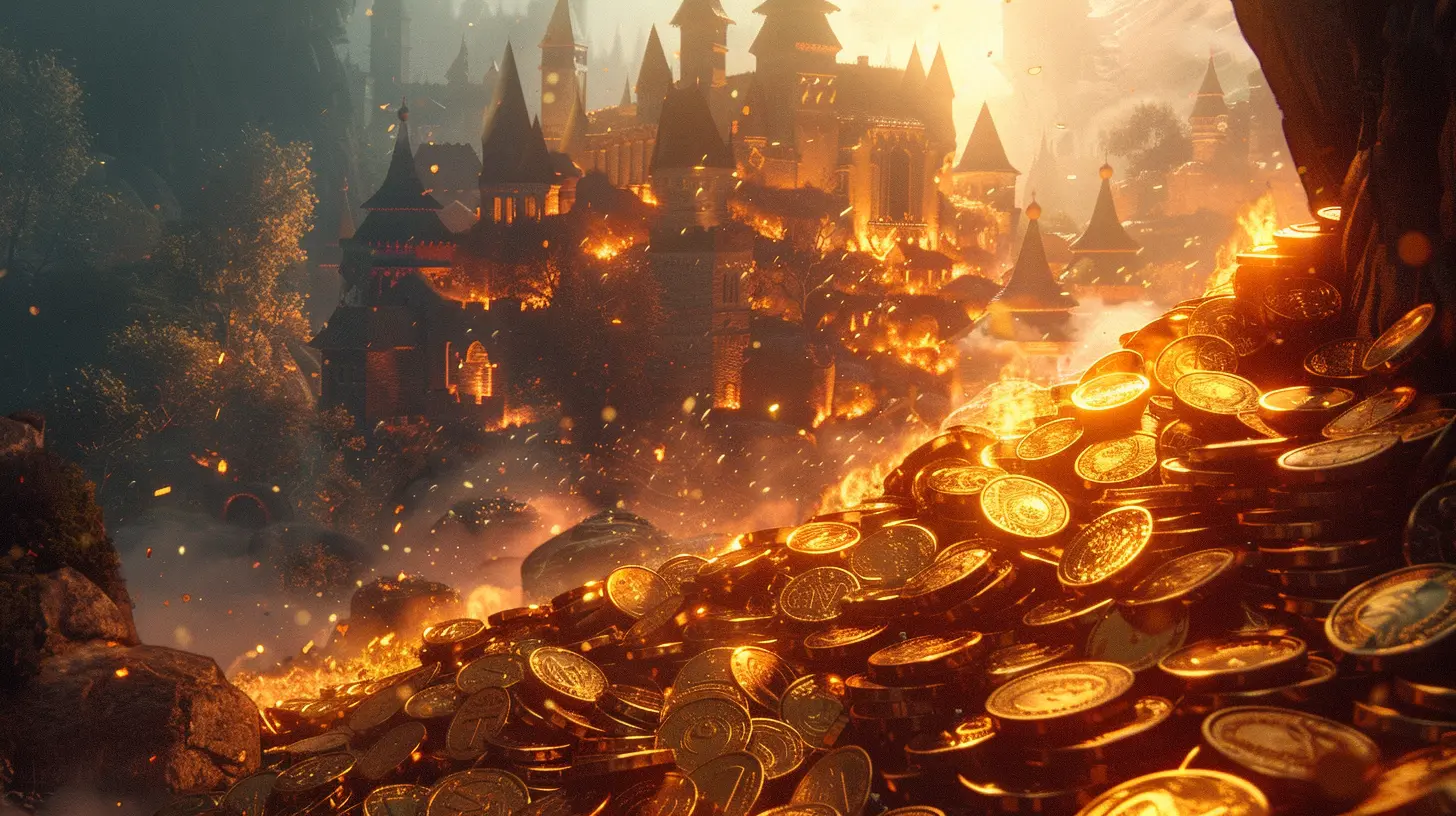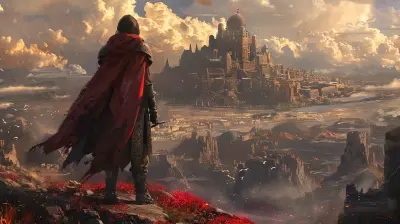Crafting a Crowdfunding Campaign Page that Converts Backers
4 July 2025
So, you’ve got a million-dollar game idea and you're ready to unleash it on the world. Congratulations! You’re just one crowdfunding campaign away from glory, fortune, and—let’s be honest—probably caffeine-induced panic attacks. But here’s the thing: even the most brilliant idea can crash and burn if your campaign page looks like it was slapped together during a Red Bull-fueled all-nighter (we’ve all been there).
Welcome to the ultimate guide to Crafting a Crowdfunding Campaign Page that Converts Backers—because just throwing up some pixel art and shouting “GIVE ME MONEY” isn’t going to cut it anymore.

Why Your Campaign Page Matters More Than Your Game (Yeah, We Said It)
Sure, your game is revolutionary, genre-defying, and possibly sentient. But when potential backers scroll through Kickstarter or Indiegogo, they’re not playing your game—they're reading your pitch. Your campaign page is the digital handshake, the first impression, the Tinder profile of your game.If your page doesn’t scream “trust me with your cash,” you might as well toss your dev diary into a volcano.

First Impressions Are Brutal: Nail That Campaign Banner
Let’s start at the top—the banner. This isn’t optional. It’s like walking into a job interview dressed like a raccoon. You could have the best résumé in the world, but nobody's listening.Pro Tips for a Banner That Actually Works:
- Visuals that Slap: High-resolution, eye-catching, relevant. Don’t just throw concept art and hope it sticks. Make it look like your game belongs on a Steam front page.- Clear Game Title: Don’t get too artsy. We get it, you're creative. But if we have to squint to read your logo, backers are already gone.
- Tagline Magic: One punchy sentence explaining what your game is. Think “Dark Souls meets Stardew Valley in space.” Boom. Intrigued.

The Video: Where Dreams (and Campaigns) Go to Die
If your video kicks off with a 60-second monologue about your childhood love for board games, stop right now. Unless you're Benedict Cumberbatch narrating, no one wants that.What Your Campaign Video Should Do:
- Get to the point in the first 10 seconds. That's right—TEN seconds.- Show gameplay. And we don’t mean your dev console, we mean the actual game.
- Talk to your viewers like humans. Smile. Be genuine. Drop the robot speak.
- Keep it under 3 minutes. Cut the fluff. Save the backstory for your blog, Hemingway.

Who Needs Words? You Do. Writing Copy That Converts
This is where the magic happens—or crashes spectacularly. Your copy has to do one thing: get people excited enough to throw money at you. And I mean, wallet-flinging, credit-card-dancing excitement.Break it Down Like This:
- The Hook: Start strong. What makes your game unique? What makes it worth funding?- The Features: Bullet points, baby. They're easy to scan. Highlight the cool stuff—multiplayer co-op, procedurally generated dungeons, talking raccoons.
- The Story: Just enough to intrigue. Not a novel. People don’t have time for lore dumps.
- The Development Team: Show off your nerd credentials. Brief bios, fun facts, awkward photos—make it human.
Stretch Goals: AKA “The Candy Store of Crowdfunding”
Ah yes, the stretch goals. Where ambition does somersaults over reality. But hey, it works. People love goals, especially if it means more dragons, bigger maps, or cats in mechsuits.Don’t Just List Them—Sell Them:
- Use visuals. Progress bars, icons, whatever makes it pop.- Avoid “meh” rewards. No one’s hyped about a loading screen wallpaper.
- Make it clear when each stretch goal unlocks. Clarity = trust.
Show Me the Rewards!
Now we’re talking. Rewards are why backers show up in the first place. This isn’t a charity, it's an investment with perks.How to Make Rewards That Don’t Suck:
- Tier Variety: From $1 “thank you”s to $500 “immortalize your name in-game.”- Physical vs Digital: Physical goods are nice, but don’t bankrupt yourself shipping Joe in Antarctica a plush dragon.
- Early Bird Specials: Yes, they work. People love thinking they got in on a deal.
The FAQ Section: Your Secret Weapon
You know what’s annoying? Repeating yourself. You know what’s worse? Losing backers because you didn’t answer questions.Use your FAQ section to handle:
- Platforms the game will release on (don't be that guy who forgets to mention Switch support)
- Estimated delivery (be honest, not optimistic)
- Refund policy (because life happens)
- Add-ons, upgrades, tech requirements—you get the idea
Social Proof: Because No One Wants to Be First
Humans are sheep. It’s science. Nobody wants to be the first to back a campaign. But if they see that 500 others already have, suddenly it’s cool.Show Them the Hype:
- Add testimonials from influencers or early testers.- Link press coverage (even if it’s just “some rando’s blog”).
- Use backer count and funding meter prominently.
Updates: Keep 'Em Hooked, Not Bored
You don’t just post and ghost. Once the campaign launches, it’s all about communication. Updates should feel like a behind-the-scenes tour, not a corporate newsletter.Your Backers Want:
- Progress—show them something new!- Challenges—be real about the struggles.
- Wins—got featured on IGN? Flex on it.
The “About Us” Section: Time to Get a Little Mushy
People don’t back games. They back people. Yes, you. The pixel-loving, coffee-chugging dev with the brilliant brain. Give them a reason to root for you.Tell your story. Share your passion. Show your personality. If you pretend you’re a faceless studio, you’ll lose the one thing crowdfunding gives you over big publishers—heart.
Common Mistakes That Make Campaigns Fizzle
Want to tank your campaign faster than a lag spike in a boss fight? Do any of these:- Set a ridiculous funding goal. Your first game does not need $3 million.
- Overpromise and underdeliver. You’re not making Skyrim 2.
- Ghost your community. Silence = sketchy.
- Use recycled assets or placeholder art. If you’re not excited enough to polish it, why would backers be?
The Final Checklist: Did You Actually Build a Page That Converts?
Before you hit “launch,” ask yourself:- Is the page visually appealing?
- Do I explain what the game is and why it’s awesome in under 60 seconds?
- Are the rewards enticing enough?
- Do I look like a real human being people can trust?
- Would I back this campaign?
If you’re nodding yes to all of those, congrats! You’re not just another hopeful developer—you’re a crowdfunding wizard. And if you're not sure... go back and tweak it. Better to delay launch than faceplant in front of the internet.
Conclusion: Campaign Page First, Glory Later
Listen, launching a crowdfunding campaign is a rollercoaster—equal parts adrenaline and despair. But it doesn’t have to be a leap of faith into the void. Crafting a page that converts isn't about tricking people into giving you money. It’s about showing your passion, building trust, and delivering value before asking for a dime.So get out there, build something awesome, and make your campaign page a shrine to why your game deserves a spot on someone’s hard drive. Or don’t. And then come back and read this again when your big idea gets 4 backers and your mom was two of them.
Hey, we warned you.
all images in this post were generated using AI tools
Category:
CrowdfundingAuthor:

Lana Johnson
Discussion
rate this article
2 comments
Victoria McAuley
Crafting a campaign page that converts? Just sprinkle some magic, wave your wand, and maybe add a cat video for good luck!
November 21, 2025 at 5:08 AM

Lana Johnson
While a cat video might add charm, successful crowdfunding requires clear goals, compelling storytelling, and engaging visuals to truly convert backers.
Ivy Jacobs
This article sparks my curiosity! What key elements truly make a crowdfunding campaign page stand out? I’m eager to learn more about the psychological triggers that can transform casual visitors into enthusiastic backers. Great insights ahead!
July 13, 2025 at 2:59 PM

Lana Johnson
Thank you for your enthusiasm! Key elements that make a crowdfunding campaign page stand out include a compelling story, clear visuals, an engaging video, transparent goals, and strong social proof. These elements tap into psychological triggers like trust, urgency, and relatability, helping to convert casual visitors into enthusiastic backers.


